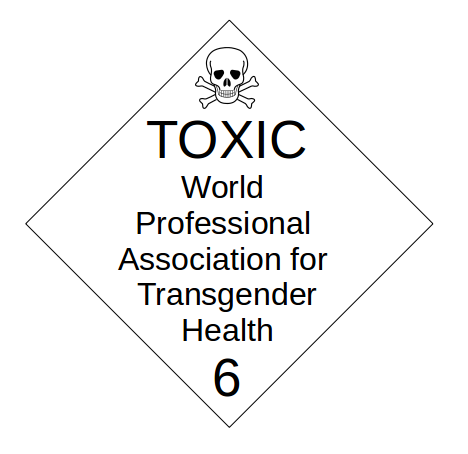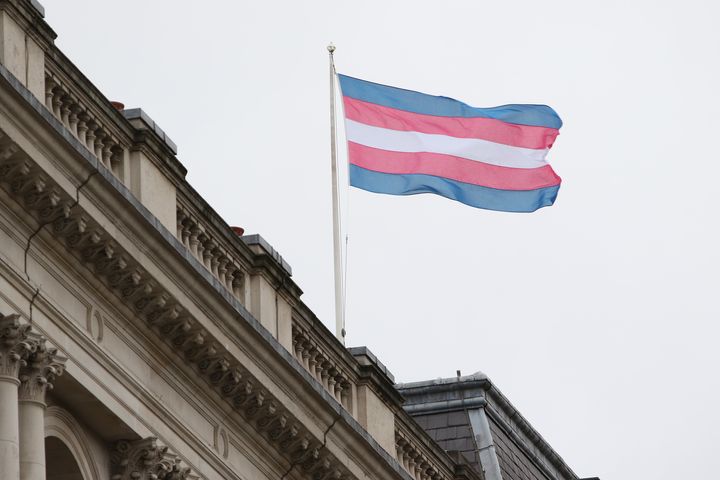After Roe v Wade: Pill Abortions Are Not the Answer
“Pill abortion” exposes women to serious adverse effects that should not be dismissed as individual mishaps.

After overturning the constitutional right to abortion on 24 June 2022, the US Supreme Court’s decision now gives the 50 US states the power to decide whether to legalize or criminalize abortion or take any action in between (similar to many other countries, e.g. Australia, where abortion is legal but regulated).
American women who are involuntarily pregnant now are faced with stark decisions. If they live in one of the eight states in which the Supreme Court decision triggered a bill to outlaw abortion immediately, they can no longer access a suction abortion at a local clinic. These eight states (and the five that will ban abortion next) are among the most economically disadvantaged in the US. Further, the women living in these states are predominantly black, latina and poor. Those who are immigrants may lack access to education.
It is clear that the burden of the Supreme Court decision will fall on women least able to manage the consequences. For its disproportionate impact on poor, black and latina women, alone, the decision should be condemned. Better educated and financially less insecure women can cross state boundaries and obtain an abortion in a friendlier state. However, even for these predominantly white women, absence from work, child-care expenses and, frequently, not telling their partner that they will undergo an abortion, can make such travel difficult.
So, what are the others to do who are stuck in a state where abortion is now illegal, but whose pregnancies keep advancing?
The magic remedy that we keep hearing about, from the National Women’s Health Network to Elisabeth Warren and VP Kamala Harris, is “pill abortion.” Proclaimed to be “safe and effective,” it can be obtained via a telehealth consultation, with pills sent in the mail.
Such messaging is misleading and dangerous. The Supreme Court has removed access to safe abortions, but “pill abortion” exposes women to serious adverse effects that should not be dismissed as individual mishaps. RU486 (Mifeprex) and PG (prostaglandin) abortion often results in incomplete terminations that must be followed up by a vacuum aspiration, or otherwise it can lead to sepsis and the woman’s death.
“How can a vitally important diagnosis of ectopic pregnancy be guaranteed via a telehealth conversation?”
The simplistic ubiquitous messaging that declares that RU486/PG abortion is “safe and effective” will lead women who are desperate to quickly terminate their pregnancies to look for abortion pills on the internet where they are widely available. This puts them in danger of taking pills that are possibly substandard, and doing the procedure without clear guidance. As a consequence, they might become gravely ill. As the FDA wrote on 16 December 2021:
"Healthcare providers who would like to become certified to prescribe Mifeprex must have the ability to date pregnancies accurately and to diagnose ectopic pregnancies. Healthcare providers must also be able to provide any necessary surgical intervention, or have made arrangements for others to provide for such care. Healthcare providers must be able to ensure that women have access to medical facilities for emergency care, and must agree to other responsibilities, including reviewing and signing the Patient Agreement Form with the patient and providing each patient with a copy of the signed Patient Agreement Form (my emphasis)."
How can a vitally important diagnosis of ectopic pregnancy be guaranteed via a telehealth conversation? Who, in a state in which abortion is now illegal, will provide “necessary surgical intervention” and how can the woman have access “to medical facilities for emergency care”? And why does the FDA demand availability of these services, when RU486/PG abortion is supposedly simple and easy?
Firstly, in order to be deemed “suitable” for a pill abortion, the FDA stipulates conditions that rule out chemical abortion. They include if a woman
- has an ectopic pregnancy (a pregnancy outside of the uterus)
- has problems with the adrenal glands (the glands near the kidneys)
- is currently being treated with long-term corticosteroid therapy (medications)
- has had an allergic reaction to mifepristone, misoprostol or similar drugs
- has bleeding problems or is taking anticoagulant (blood thinning) drug products
- has inherited porphyria
- has an intrauterine device (IUD) in place (it must be removed before taking Mifeprex).
This list rules out quite a few women, including all those who suffer from asthma. Other guidelines suggest that smoking or being obese may be impediments for a woman wanting a pill abortion. Also, this type of abortion should only be attempted if a woman is only a few weeks pregnant: the recommendation for its application used to be not beyond 7 weeks, then 9 weeks and has recently been extended by the FDA to 10 weeks (which is questionable in itself, because the bigger the embryo is, the more problems can arise). Also, women are frequently unable to determine when exactly they became pregnant.
In 1991, I co-authored the book RU486: Misconceptions, Myths and Morals with Janice Raymond and Lynette Dumble and followed it up in 2013 with a lengthy new Preface which includes statements from women who suffered greatly when undergoing this “chemical” abortion.
What happens during a pill abortion? Firstly, the woman takes a 200mg pill of Mifeprex (RU486) which blocks the hormone progesterone and thus denies nutrients to the growing embryo which starts detaching itself from the wall of the womb. She may also be given antibiotics to prevent an infection. Women might start bleeding and/or feeling nauseous.
24-48 hours later, the woman takes a prostaglandin tablet (usually Cytotec in the USA), which causes the cervix to soften and the uterus to contract as it begins expelling the embryo and placental tissue. This is the point at which many women begin to experience serious problems. Instead of tolerable blood loss (“like a heavy period,” they are told), mild cramping and slight nausea, blood loss will be extensive, nausea and vomiting debilitating and stomach pain and cramping extremely painful. This is how Abby Johnson described her RU486/PG abortion:
Ten minutes [after taking the prostaglandin] I started to feel pain in my abdomen unlike anything I had ever experienced. Then the blood came. It was gushing out of me. I couldn’t wear a pad … nothing was able to absorb the amount of blood I was losing. The only thing I could do was sit on the toilet. I sat there for hours … bleeding, throwing up into the bathroom trashcan, crying and sweating.
After hours on the toilet cramping, bleeding and feeling sick, Abby decided that a warm bath might make her feel better. However, she was “scared to death” when she realized only minutes later that the water had turned “bright red.” Later she repeatedly passed blood clots the size of a lemon. Spending the night on the toilet and the bathroom floor, the first thing she did the following morning was to ring Planned Parenthood where she herself worked. To her dismay, she was told by the nurse, “That is not abnormal.” Abby felt betrayed by Planned Parenthood that had let her believe that pill abortion was easy and “more natural.” She continued to bleed heavily for 8 weeks and suffer excruciating cramps and nausea.
Norine Dworkin-Mc Daniel was another woman who suffered debilitating symptoms after taking the prostaglandin. After bleeding for 14 days, an ultrasound confirmed that she had aborted. However, her problems were not over. She developed “huge cystic boils that soon covered my neck, shoulders and back.” She was also overcome by fatigue and later developed depression. It took her nine months to get back to feeling normal and her body’s chaos of “pregnancy hormones clashing with antipregnancy hormones, clashing with stress hormones” abated. She too felt betrayed by the pill abortion and her story was published in Marie Claire on 27 June 2017.
“Eighteen-year-old Holly Patterson did not survive her RU486/PG abortion.”
At least Abby Johnson and Norine Dworkin-Mc Daniel survived their pill abortions and did not need a blood transfusion, nor did they develop sepsis. When Abby challenged Planned Parenthood about why they had not mentioned these risks, she was told that they don’t want to scare women away.
Eighteen-year-old Holly Patterson did not survive her RU486/PG abortion. She died hours after receiving the pills from a Planned Parenthood Foundation in California from a virulent infection. Her father, Monty Patterson, embarked in 2005 on a crusade to get the US Congress to pass “Holly’s Law” which would have seen RU486/PG abortion suspended and reviewed. Unfortunately, he was unsuccessful. He did, however, establish an informative website with women’s RU486/PG abortion stories to warn women and girls of this unfortunate drug cocktail that can never be safely administered since no woman knows how she will respond to these powerful chemicals.
These stories are only the tip of the iceberg. Manon Jones, a young woman in the UK, died, despite twice returning to the clinic that had given her the RU486 and PG medications, complaining of blood loss and feeling very unwell. She was dismissed until finally a blood transfusion was ordered. But she died before it was administered.
Question: In those US states where abortion is now illegal, where can women go when they experience heavy blood loss, feel sick and nauseous, develop fevers and fear the abortion is incomplete which puts them at risk of sepsis and death? 5-10 percent of all pill abortions are incomplete which means parts of the embryo/placental tissue is left in the womb and must be removed.
Following a cluster of deaths of women from sepsis (in particular from a particular bacterium C. sordelli) in 2004, the FDA added
… new information within the existing black box on the label. The added information is about "the risk of serious bacterial infections, sepsis, and bleeding and death that may occur following any termination of pregnancy, including use of Mifeprex (RU-486).
Surely, responsible healthcare practitioners – feminist and otherwise – have a duty of care to warn women of these pill abortions. They should immediately start lobbying politicians in those states that have now made abortion illegal. The coming up mid-term elections in November are a perfect time to vote out recalcitrant politicians. In the long term, US women need access to health systems that deliver care throughout their life-cycle.
For women who need urgent abortion access now, I can only hope that they get help through innovative schemes supporting their travel to other states and the cost of childcare while they are away, as well as help with funding their suction abortions – which is the correct term, rather than “surgical” abortion, as no knives are involved and the procedure is safely over in 5 to 10 minutes during which time they are cared for by a nurse and/or doctor in a clinic, should anything go wrong. They should also insist that they only need a local anesthetic which makes the procedure simpler and much cheaper. In research from the UK, Finland and Australia which compared pill abortions to suction abortions, the latter are regularly found to be safer, more efficient and preferred by women.
Lastly, there is one particular aspect of pill abortions that I find particularly infuriating. Contrary to popular belief, more than half of all women seeking abortions in western countries including the USA are not teenage girls, but women who already have children. For a variety of reasons, they have decided they simply cannot have another child. This decision is often made with a heavy heart. Yet in a pill abortion, they bear the full brunt of responsibility. Sitting at home, often alone if they did not inform their partner for fear of repercussions, they have to live through scary hours of pain, blood loss and fear for their lives. But even more traumatic can be that they see the tiny embryo dropping into the toilet … yes it is only a few millimetres long, but for many women, it is their future child that they are flushing down the toilet.
As “Rose” (not her real name) from Australia remembered:
Overall the worst part of the RU 486 was the sheer amount of time it took for me to “terminate” my baby: with each and every large clot of blood – which I could literally feel passing through my insides and then out of my vagina – was a reminder of the fact I was terminating a baby, for which I felt hugely saddened. More than I realized I would. It was three days of nausea, high temperature/sweating (I was worried about infection), cramping, lots of blood, distress and swirling emotions, thoughts, etc. I would never ever go through that again.
Rose also wrote: “I absolutely support a woman’s access to abortion – but I think RU486 and prostaglandin is the wrong way to go.”
My sentiments exactly. I think that RU486/PG abortion is the cruel version of the 21st century backyard abortion and no woman should have to go through it and jeopardize her life.
4W provides paid writing work for over 50 women in countries spanning the globe. This work is made possible thanks to our paid monthly subscribers. Join today to support our work!
Enter your email below to sign in or become a 4W member and join the conversation.
(Already did this? Try refreshing the page!)




Comments